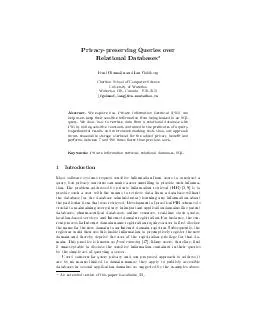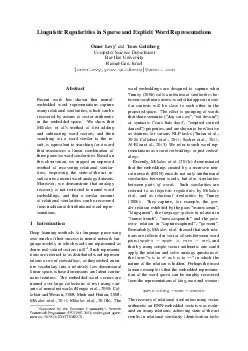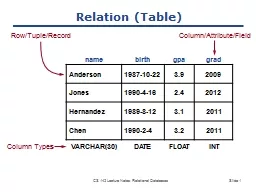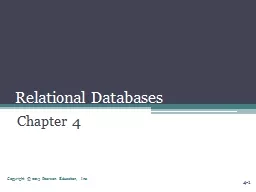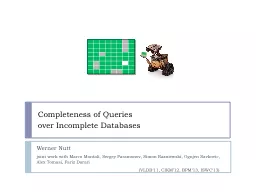PDF-Privacypreserving Queries over Relational Databases Femi Olumon and Ian Goldberg Cheriton
Author : olivia-moreira | Published Date : 2014-12-20
uwaterlooca Abstract We explore how Private Information Retrieval PIR can help users keep their sensitive information from being leak ed in an SQL query We show
Presentation Embed Code
Download Presentation
Download Presentation The PPT/PDF document "Privacypreserving Queries over Relationa..." is the property of its rightful owner. Permission is granted to download and print the materials on this website for personal, non-commercial use only, and to display it on your personal computer provided you do not modify the materials and that you retain all copyright notices contained in the materials. By downloading content from our website, you accept the terms of this agreement.
Privacypreserving Queries over Relational Databases Femi Olumon and Ian Goldberg Cheriton: Transcript
Download Rules Of Document
"Privacypreserving Queries over Relational Databases Femi Olumon and Ian Goldberg Cheriton"The content belongs to its owner. You may download and print it for personal use, without modification, and keep all copyright notices. By downloading, you agree to these terms.
Related Documents

